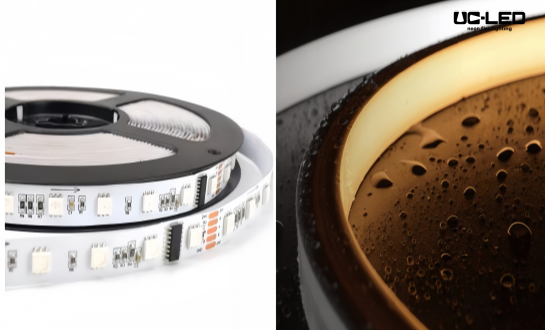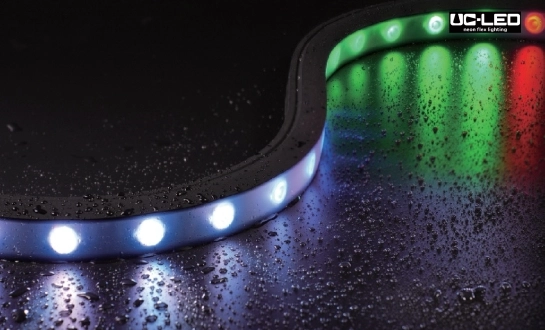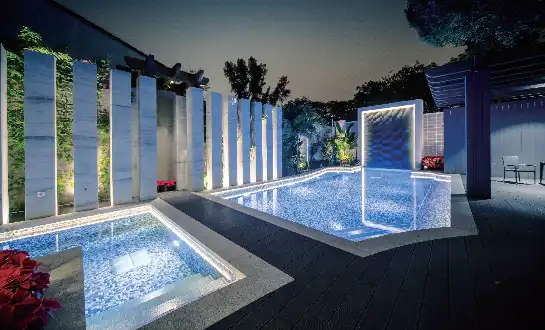Selecting the Right Flexible Neon Strip for Uniform Illumination
The foundation of achieving uniform light begins with choosing the appropriate flexible neon strip. Not all strips are created equal, and selecting the right one can make a significant difference in the evenness of your lighting.
Quality Matters: High-Grade LEDs and Materials
When it comes to flexible neon strips, quality is paramount. High-grade LEDs and materials contribute significantly to uniform light output. Look for strips that use premium 2835 or 5050 LED chips, known for their consistent brightness and color rendering. These LEDs are often more tightly binned, meaning they've been sorted for uniformity in color and brightness, resulting in a more cohesive light output along the strip.
Additionally, the quality of the phosphor coating on the LEDs plays a crucial role. Superior phosphor coatings help diffuse light more evenly, reducing the appearance of individual LED hotspots. This is particularly important for flexible neon strips, as they are often viewed directly rather than as indirect lighting.
LED Density: More LEDs for Smoother Light
The density of LEDs on a flexible neon strip significantly impacts the uniformity of light. Strips with higher LED counts per meter, such as 120 LEDs/m or even 240 LEDs/m, tend to produce a more continuous and uniform light output compared to lower-density strips. The closer spacing between LEDs minimizes dark spots and creates a more seamless neon effect.
However, it's essential to balance LED density with power requirements. Higher density strips typically require more power, which can affect the maximum run length before experiencing voltage drop. Ensure your power supply can handle the increased load of high-density strips.
Color Temperature Consistency
For applications requiring white light, pay close attention to color temperature consistency. Look for flexible neon strips that specify a tight range of CCT (Correlated Color Temperature) variation, ideally within ±100K. This precision ensures that the color of light remains consistent along the entire length of the strip, avoiding noticeable shifts from warm to cool tones that can disrupt the uniform appearance.
Installation Techniques for Even Light Distribution
Proper installation is crucial for achieving uniform light with flexible neon strips. Even the highest quality strips can produce uneven results if not installed correctly.
Surface Preparation: The Foundation of Uniformity
Before installing your flexible neon strip, ensure the mounting surface is clean, dry, and as smooth as possible. Uneven surfaces can create shadows or cause the strip to bend irregularly, leading to inconsistent light output. For particularly uneven surfaces, consider using a mounting channel or profile designed for flexible neon strips. These channels not only provide a smooth surface but also help dissipate heat, which can improve LED longevity and consistency.
Avoiding Tight Bends and Stress Points
While flexible neon strips are designed to bend, excessively tight curves can stress the LEDs and internal connections, potentially leading to uneven light output or premature failure. Adhere to the manufacturer's minimum bend radius specifications. For sharper corners, consider using flexible corner connectors designed specifically for neon strips. These connectors maintain electrical continuity while allowing for clean, 90-degree turns without stressing the strip itself.
Strategic Placement of Power Injection Points
Voltage drop is a common culprit behind uneven lighting in long runs of flexible neon strips. As electricity travels along the strip, resistance causes a gradual decrease in voltage, resulting in dimmer light output towards the end. To combat this, strategically place power injection points along the length of your installation.
For runs longer than 5 meters, consider injecting power at both ends of the strip. For even longer installations, add power injection points every 5 meters or as recommended by the manufacturer. This ensures that each section of the strip receives adequate power, maintaining consistent brightness throughout.
Troubleshooting and Fixing Common Uniformity Issues
Even with careful selection and installation, you may encounter uniformity issues with your flexible neon strip. Here are some common problems and their solutions.
Addressing Voltage Drop
If you notice the far end of your flexible neon strip appearing dimmer than the beginning, voltage drop is likely the culprit. Besides adding power injection points as mentioned earlier, consider these additional fixes:
- Use thicker gauge wires for power connections to reduce resistance.
- Opt for a higher voltage strip (24V instead of 12V) for longer runs, as higher voltage systems experience less voltage drop over distance.
- Employ a constant current driver instead of a constant voltage driver to maintain consistent LED current regardless of voltage fluctuations.
Eliminating Dark Spots and Shadows
Dark spots or shadows can occur due to physical obstructions or improper mounting. To address these issues:
- Ensure the strip is mounted securely along its entire length, with no sections lifting away from the surface.
- Use a deeper mounting channel to recess the strip further, reducing the visibility of individual LEDs and creating a more diffused effect.
- For installations behind diffuser panels, experiment with the distance between the strip and the diffuser to find the optimal spacing for even light distribution.
Correcting Color Inconsistencies
If you notice variations in color along your flexible neon strip, particularly with RGB or tunable white models, try these solutions:
- Verify that all controllers and power supplies are compatible and properly synchronized.
- For long runs, use signal amplifiers to boost and clean the control signal, ensuring consistent color commands reach all LEDs.
- In cases of severe color shifting, the strip may be defective. Contact the manufacturer for potential replacement under warranty.
Conclusion
Achieving uniform light with flexible neon strips requires attention to detail in selection, installation, and troubleshooting. By choosing high-quality strips, implementing proper installation techniques, and addressing common issues, you can create stunning, evenly lit displays that elevate any space. Remember, the key to success lies in understanding the unique characteristics of flexible neon strips and adapting your approach to suit your specific project requirements.
For more information on selecting the perfect flexible neon strip for your project or to discuss custom lighting solutions, don't hesitate to reach out to our expert team at Linda@uc-led.com. We're here to help you bring your illumination visions to life with uniform, breathtaking results.







